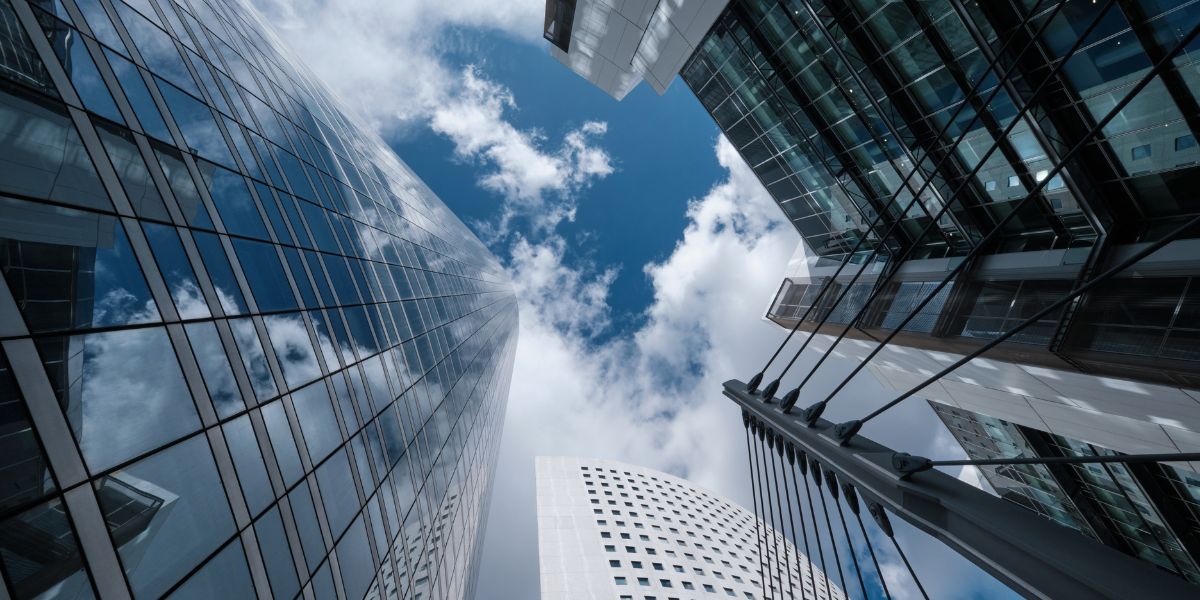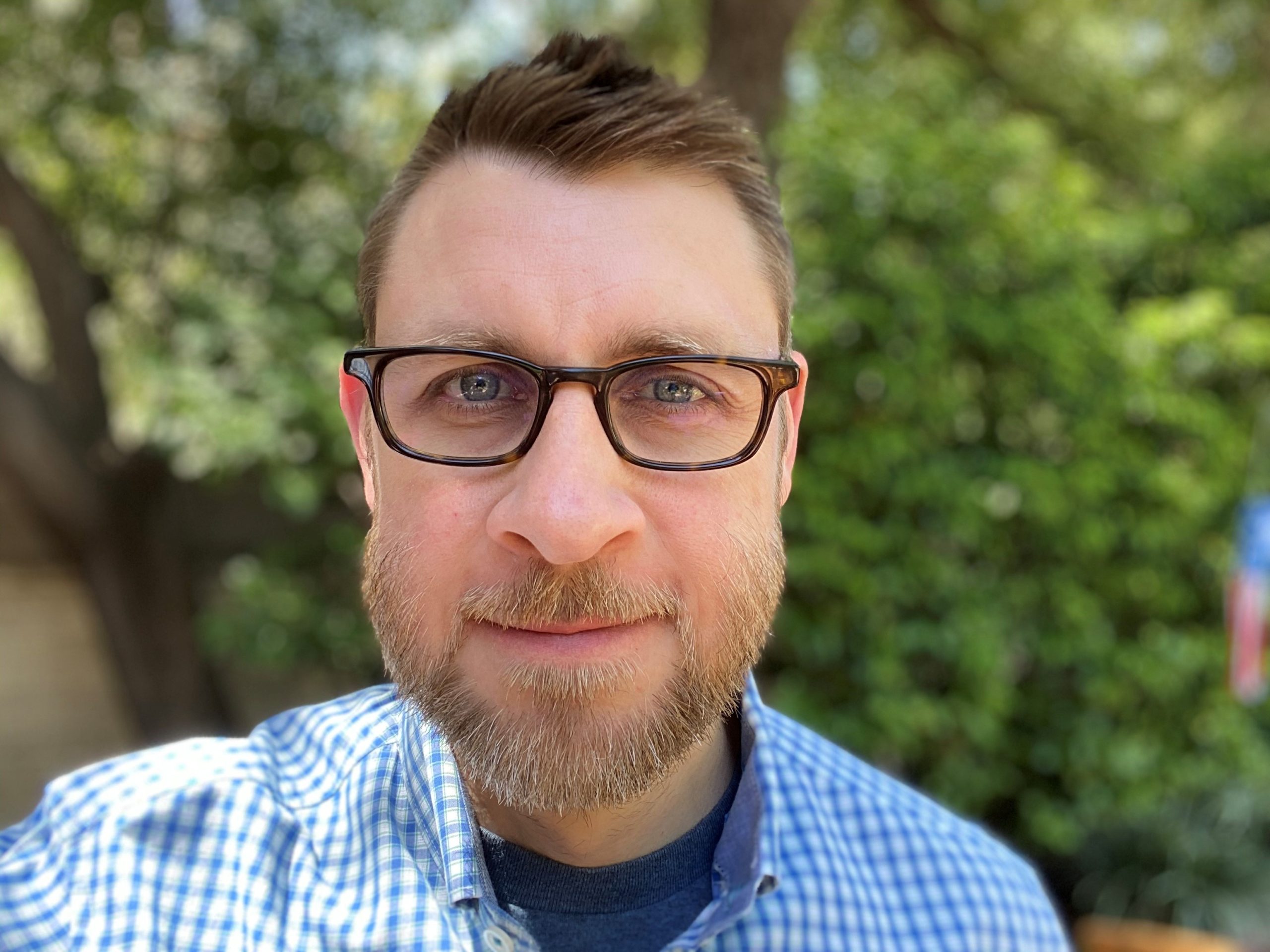James De Pietro
Episode 130
Back to Family Business and the Crown City
Mr. James De Pietro is a Partner at De Pietro Holdings LLC, a family-owned and operated commercial real estate investment company in Pasadena, CA. A member of the senior management team, James is involved with the strategic direction of the company while managing the company’s daily operations with a focus on asset management, financial and market analysis, and business administration.
James holds a Master’s of Business Administration degree from the Jones Graduate School of Business at Rice University and a Bachelor’s degree from American University in Political Science.
He currently serves as a Board Member for Civitas Pasadena, a group dedicated to building a place for discussion among a diverse and dynamic group of people, and was recently appointed to the Pasadena Community Access Corporation Board.
Previously, James was a member of Pasadena’s Transportation Advisory Commission, where he served as Vice Chari and Chair, the City of Pasadena’s South Lake Parking Place Commission, and the Executive Board of the Verdugo Hills Council of the Boy Scouts of America.
In 2020, James launched The Crown City Podcast and serves as its producer and host. The podcast seeks to explore the people and places that make our communities such a special place to call home. With 42 episodes and counting, the podcast has hosted conversations with elected officials, historians, artists, and community advocates.
At a time when people are often divided and discourage, The Crown City Podcast is a home for civil and civic-minded conversations about the good that surrounds us.
James De Pietro Takeaways
- James De Pietro is a Partner at De Pietro Holdings LLC, a family-owned and operated commercial real estate investment company in Pasadena, CA. As a member of the senior management team, James is involved with the strategic direction of the company while managing the company’s daily operations with a focus on asset management, financial and market analysis, and business administration.
- James was a member of Pasadena’s Transportation Advisory Commission, where he served as Vice Chair and Chair, the City of Pasadena’s South Lake Parking Place Commission, and the Executive Board of the Verdugo Hills Council of the Boy Scouts of America.
- In 2020, James launched The Crown City Podcast and serves as its producer and host. The podcast seeks to explore the people and places that make our communities a special place to call home. With 42 episodes and counting, the podcast has hosted conversations with elected officials, historians, artists, and community advocates.
- In this episode of MySGV, James talks with Russell and Scott about his personal and professional connections to the San Gabriel Valley, how he started his podcast and what the future of his podcast holds.
James De Pietro Quotes
- “I thought that maybe there was an opportunity to have more civil conversations with people, explore these issues, and talk to people that I would never encounter otherwise. My first guest was Terry Tornick, and I didn’t know if I was going to do it or not. I asked Terry on a whim if he would come on the podcast, and he said yes. And I was like, Oh, great. Now I have to do this, and I have to do it in a semi-professional manner because I’m going to have the then-mayor of Pasadena on the podcast.”
- “My grandparents bought a couple of acres in West Covina, and they built a couple of apartment buildings and a couple of commercial buildings there, and they’re still there for the most part. They got to name the streets they developed, so my dad and uncle have streets named after them, which is fun.”
- “Next year is an election year, so I’d like to have some elected officials or people running for office and flesh out some of these important issues facing our area and get their thoughts and plans for the area.”
Show Notes
What made you to do that write-up of our podcast?
I’ve done the podcast for several years, but something that I’ve done here and there has been building connections with different groups and one of them has been podcasts I enjoy listening to. And I’ve obviously enjoyed listening to yours for a number of years.
It was an opportunity to share a podcast with my audience. I love to share what other people are doing, and since you’ve done so much work in bringing these stories, businesses, and nonprofits to light, I wanted to share that with my audience. I thought it’d be another way to make more introductions in the community by introducing my audience to your podcast and, hopefully, vice versa.
That was a really selfless act.
I appreciate that. The podcast isn’t our full-time job, and I think that provides us with a little bit of cover in terms of competition. So I think we’re all about bringing to light these stories. I think we’re both doing the same thing, and the more we can share with each other, I think the better. We’re both focused on the San Gabriel Valley and the people and amazing businesses here.
You’re focused on Pasadena correct?
I am. So, the podcast started because I am a resident of Pasadena, and I wanted to focus on Pasadena. But I started to branch out. I’ve done episodes on Los Angeles, and my June episodes were about Altadena. So, I’m starting to branch out, and I am not limiting myself to Pasadena specifically.
What is your connection to the San Gabriel Valley?
I have two connections. One is a personal connection, and one is a professional connection. So, on the personal side, I started out as a visitor of Pasadena in the San Gabriel Valley. I grew up in the Los Feliz area, and there wasn’t a lot to do there at the time. So we would spend time in Burbank, Glendale, and Pasadena, what we consider in commercial real estate as the Tri-Cities.
My sister went to dance classes in South Pasadena, so I knew Mission Street really well. She went to high school in Pasadena, so we were always kind of in the area. In 2009, I was living in Houston with my wife, and it was a really bad time economically for a lot of people, and the opportunity arose to return to Los Angeles. When we were looking at places to live, I wanted to live in something other than Los Angeles, and I had more of a connection to Pasadena, San Gabriel, Arcadia, and Altadena.
We found a house in Pasadena and have been here since 2009. My mother is actually from Montebello, so we spent a lot of time in the Montebello area with my grandparents, who were there for decades. So, I had a real affinity for San Gabriel, Rosemead, Montebello, all of those areas.
The professional connection I have is that I am a third-generation member of a family business. We do commercial real estate and investment.
It started in West Covina, actually. My grandparents bought a couple of acres in West Covina, and they built a couple of apartment buildings and a couple of commercial buildings there, and they’re still there for the most part. They got to name the streets they developed, so my dad and uncle have streets named after them, which is fun.
The company used to be focused on development, and right now, we don’t do development anymore. We mostly do investments. So we will buy a property and do a value add. So we’ll put new tenants in and fix the building up.
We have a long-term hold approach. Most investment companies are looking at a three to five-year time period. We’re looking at ten years plus.

Who else knows that story, and how do you pass on that knowledge?
That’s a very good question. For years, we didn’t have a website. We weren’t really telling our story. Finally, I convinced them to build one, and we have a company website where we tell a little bit of that story so people can understand who we are. It’s really important to get that message out because, you know, when a tenant, a buyer or seller, wants to know who you’re doing business with. I think that’s really important. And we’ve expanded the business to Colorado, Arizona, Utah, and potentially, Idaho.
It’s important that people understand who you’re doing business with. It’s important for us because we are focused on long-term relationships with our tenants and making sure that they’re satisfied and successful in our spaces. And it’s family-owned and operated.
What was your early life like, and how did it shape who you are today?
As I mentioned, I grew up in the Los Feliz area, and three out of my four grandparents were immigrants from Europe before World War 2 broke out.
A lot of the values that were instilled in my parents from them were connections to their heritage. Growing up, we kept those traditions alive. But there was also a sense of gratitude to the United States that it was a place of opportunity that didn’t exist in Europe then.
California presented this great opportunity for them to flourish, from a career standpoint, but also a place to raise a family. Those values were instilled in my parents, and I think they will be passed along to my generation as well.
I had a very good upbringing in the Los Feliz area, a very supportive and hardworking family. Because of the family business, my dad, uncle, and grandfather worked a tremendous amount. And I think those values were passed down. You know, sometimes I wish my dad was around a little bit more, but it shows his commitment to his career and serving our tenants, and eventually, I would end up continuing that tradition.
I was very fortunate to have the upbringing I did. We were also a big scouting (Boy Scouts) family, which instilled that sense of community service in us from an early age. My parents were very involved in the community, whether it was their church or civic groups. Those examples have been really important in my life.
Did you know you were going to be in the family business?
My parents were open about it, but my grandmother wanted me to continue the business. Growing up, I thought I was going to move away.
When I went away to college, I thought I would never come back to Los Angeles. I thought I would wipe that part of my life away because I wanted to get away from here.
But I had an opportunity to come back to work for the business, and I’ve really enjoyed it. It’s been a wonderful time for me to spend time with my dad. And so working with him and seeing him as he’s growing older has been a wonderful experience for me.
You know, we see them growing up as our parents, but then when you work for the family business, you see them as a partner as well. And I think it’s an interesting relationship seeing that kind of develop over time.
You said your family was involved with scouting. Was your dad a scout master?
He was.
Are you an Eagle Scout?
I am an Eagle Scout.
What was your Eagle Scout project?
It was at Woodyear Narrows. We planted some trees along one of the trails and did some landscaping work. We also put some irrigation lines in to help the trees and plants grow.
You said you wanted to get away but ended up coming back and working with the family business in the San Gabriel Valley. Have you been enjoying it? Was it easy for you?
It was an easy transition. I moved back during the Great Recession, so it was a challenging time for a lot of people. My wife and I jumped into the Pasadena life. We try to do as many things around Pasadena as we can, and it’s been an easy transition since I knew it growing up.
Can you tell us more about your family?
I’m married, and I have four young children.
It’s a challenge. I felt bad leaving my house this morning because it’s summer vacation as we’re recording this, and the kids are home. Three of the kids go to school, so they’ll be going to school in a couple of weeks.
You said you wish your father was around more when you were younger. How has the affected you as a father?
There is a lot of work I need to do. I want to be very clear about that. But I think it seems like over the course of generations, you know, the fathers in our lives have spent more time with their children. His generation, his father, wasn’t around very much. You know, they didn’t play a large role. I mean, this is the forties, fifties, and sixties. It was a different time.
My dad was a lot more active in my life than his father was in his. And I try to be more active with my children as well. And I think I think my father has realized that, and because I work with him, there’s a little bit more flexibility at work to take care of my family, which I think is a lot of places wouldn’t be as understanding, and that’s another reason why I’m appreciative of where I am right now.
We ask each guest to bring something with them. What did you bring with you?
I brought one of my children’s bracelets they wore when they were born. I have four children, and two have had medical issues. My daughter, in particular, had life-threatening medical issues when she was born. She’s doing well now, and her prognosis is very good. But, it cemented how I wanted to be as a father, and I wanted to be present in their lives and make a connection with them.
It represents a lot to me. Having children has really changed my perspective on a lot of different things. My politics have changed a little bit, but so has how I view services available to families.
When your child’s sick and you go to Children’s Hospital, and they tell you it’s going to be 24 hours before they can see you, and you see all the families that are there that are just waiting. You know that’s heartbreaking. Or when you take your child to Urgent Care because they have the flu or whatever, and there’s a family there arguing about whether they can pay the copay because they don’t have the resources.
I think that the system has a lot of challenges, and I think having a family has really kind of brought those issues to light: family services, health services, and mental health services that I think are so lacking, and we need to be more supportive of families.
What is the age range of your children?
My oldest is nine, and my youngest will be two next month.
How did you start your podcast?
Our podcast started around the same time as yours. It was the fall of 2020. I had served on the Transportation Advisory Commission for the city of Pasadena. My term ended in the summer of 2020, and it was an opportunity where I didn’t know what to do next, and we were obviously all in lockdown at the time.
I’d always listened to podcasts. I’ve always enjoyed stories and getting to know people. And so it was the perfect time just to put it out there.
My first guest was then-mayor Terry Tornick, who you’ve had on the podcast here. I knew Terry from when he was on the city council. He was generous and nominated me for the commission, and I served on it until 2020. I knew I wanted to do something to stay in touch with the community.
I’m a very shy and reserved person. So, it was an opportunity to push myself a little bit and see what conversations I could have. When I think back on 2020, it seems normal now, but it seems like such a dangerous time politically where the discourse was so toxic.
I thought there might be an opportunity to have more civil conversations with people, explore these issues, and talk to people I would never encounter otherwise.
After the show with Terry Tornick worked out well, more people generously came on the podcast. But I was really trying to explore Pasadena’s history and the area’s history that I didn’t know because I wasn’t originally from Pasadena.
Now, we’re going to be in our third year this fall. I’ve done 42 episodes. The last episode I did was actually a little bit different. It was a recorded, narrated story about a building on East Colorado Boulevard, which is a departure for me. It took a couple of months to research it, and I’m pretty happy with it.
Your shows are more issue oriented. You do a deep dive into the issues.
I try to. I provide my guests with the questions and topics beforehand, and one of the best compliments I get is when they say, oh, you seem like you’ve done your research.
There are a lot of complicated issues and topics out there, and it’s important to understand them. It’s an opportunity for me to learn more about winemaking or, you know, gang violence in Altadena or anything like that. I mean, the topics are really varied.
Where do you do your show?
During COVID, it was done from my home office/bedroom.
How did you have guests come on?
We used Zoom, and then we used a platform called Zencastr, which is similar to Zoom, but it records on several channels. It makes editing easier.
I’ve had the opportunity to do guest interviews in person. I have remote equipment, so I can go to some places with the guests.
I’ve done several interviews in backyards, and you pick up the sounds. There was a helicopter flying above one that we couldn’t do anything about, but then you got the birds as well. So it’s a fun kind of having that audio in the background. And then, for the Altadena episodes, we actually recorded both of those episodes at a park in Altadena.
This allows us to go where the guest is or where they feel comfortable.
How far in advance do you plan your podcast out? Is it easy to get guests?
I am comfortable booking the guests, and it really depends. For some, it’s taken me six or seven months for some guests to get them recorded. Others have a shorter time period.
Do you have to do everything for your podcast?
Yeah. I produce and edit it. I do all the audio levels and then all the corrections.
It’s self-produced and hosted, So I do all of that. And so I get to a point where when I’m about to post it, I don’t want anything more to do with it once it goes live. I’m done with that episode.
When I first first started doing it, I didn’t have any audio training or technical training. It would take me a full week to edit one episode, and that’s a lot of time. I’ve gotten a lot better.
What do you have in store for the future?
We were talking before we started recording that you’re recording this episode now, but it will drop in a few months. I’m just incredibly impressed by that and the system that you have developed over time.
It’s a model for someone like me, and I’m impressed by your podcast’s production value and interactions with your guests. I think authenticity is really big, and I think you both feel very genuine with your guests.
I’m still trying to figure out what the next steps are. There was a lull in guests. I couldn’t get anyone lined up in the spring.
Now, I’ve picked up again as my guests’ schedules have opened up. I want to continue doing the podcast and keep exploring these issues.
Next year is an election year, so I’m hoping to have some elected officials or people running for office and, hopefully, flesh out some of these important issues facing our area and get their thoughts and plans for the area.
I tried to do a YouTube video around an episode, but it didn’t work. So, I want to do more with YouTube and social media.
What did you want to accomplish when you started?
I started it, not knowing what impact it would have. I think I had really meager ambitions of just putting something out there and seeing if someone would listen.
It’s grown in that I want to get into more topics and explore some of these stories. I had an opportunity to talk with a well-known podcaster a year ago, and they asked ‘Why are you doing the podcast?’ and “What’s kind of the throughline with your guests?” And it’s inspiration. You know, every story that every guest shares is inspiring to me. And I’m someone who feeds off that.
My guests inspire me. I’ve had guests that you talk to, and then during the conversation, you learn they were on an 8-year yacht trip, and you’re like, how did that happen?
Or Treyvon Saylor, from Sailors Brew Coffee in Pasadena, you know, he was a veteran. He served in Iraq and Afghanistan, served the community as a police officer, and then founded a coffee shop with his family. You know, those are inspiring stories, and I think that’s what I really want to be the through line going forward: trying to find inspiration in every episode.
Where can people find you, the crown city podcast, and your business?
You can find the podcast on most platforms. It’s the Crown City Podcast. The website’s the crowncitypodcast.com. On Instagram, it’s Crown City Podcast.
My business website is depietroholdings.com. There’s a list of buildings and available space that we’ve developed so people can see what is available in the San Gabriel Valley.

James De Pietro
Cal Tech turtle ponds. I don’t know if your guests have talked about that. In the middle of Cal Tech is a series of ponds and small waterfalls you can visit. It’s open to the public, and there are frogs and turtles.
Orange Grove Blvd. It is so symbolic of the history of the area. We think of it as the place and home of the Rose Parade, but Orange Grove was known as Millionaire’s Row. It was the place where a lot of really wealthy people built estates, and that’s what it was known for in the early 20th century. They built these grand estates, and very few of them are left. The Wrigley Mansion, the Fenness Estate, and the Gamble House is on the end. Those mansions all went away because of economics. And I think of how the city has changed and how that area went from these grand estates to apartments and condos. There are a lot of different pieces along Orange Grove that are really important that we overlook. One of those is Defenders Parkway, which is a small sliver between the entrance to the 134 Freeway And Orange Grove, and it’s a place where there’s a memorial for service members who have died during the war on terror. Across the street is the World War One Memorial flagpole. Defenders Parkway is so important because it represents the sacrifice that people have given to Pasadena in service of the country.
Pepper Street: Pepper Street is so important because it was the home to the Robinson family. Jackie and Mac Robinson were raised on Pepper Street, and the house no longer exists. There’s a marker where the house was.








